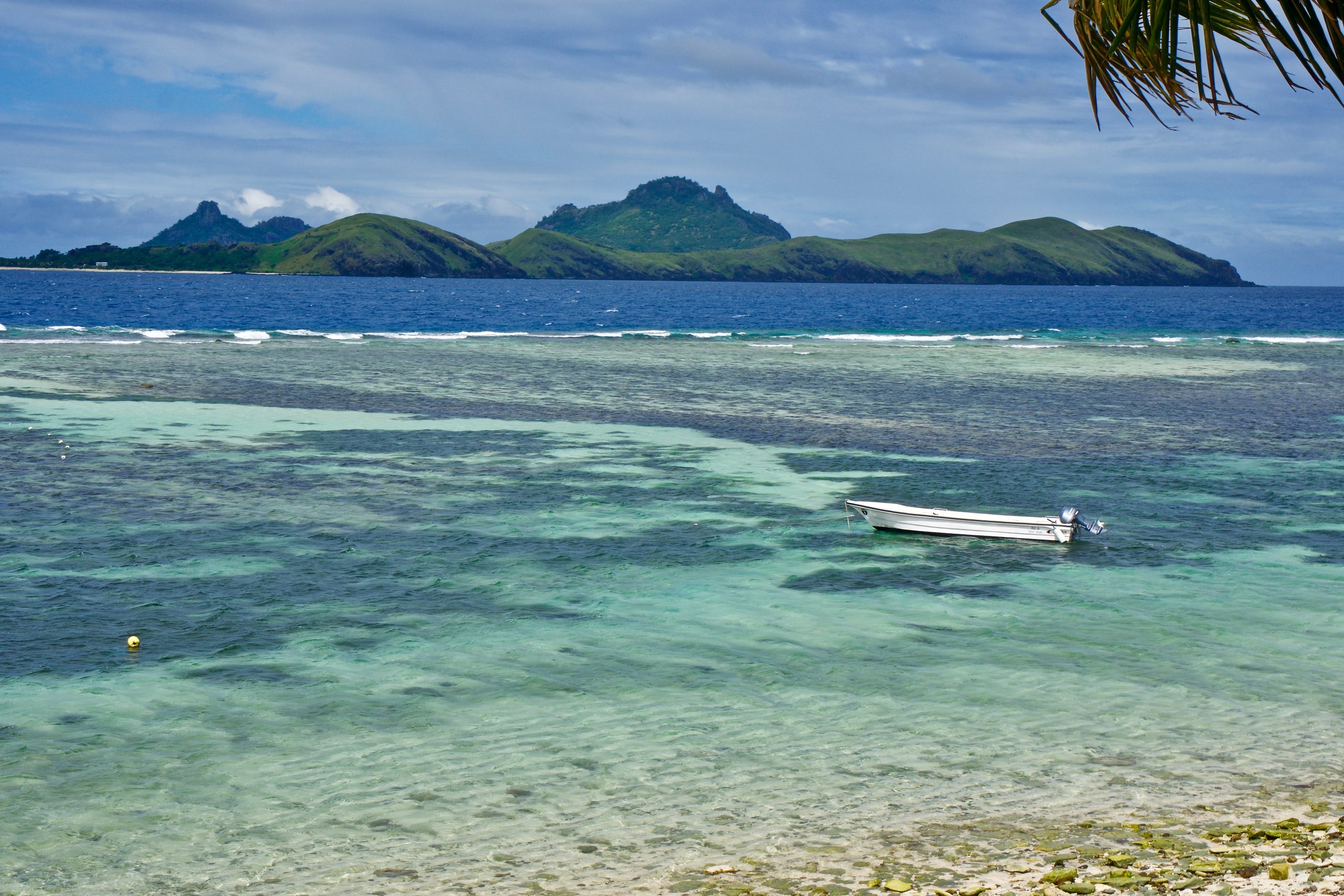Fiji – a place that looks so much like paradise you’d hardly believe it’s real. You’ll fall in love with the blissful beaches, enthusiastic locals, and you may even make friends with a turtle. Once you leave, you’ll be planning your trip straight back, and will always be greeted with a ‘welcome home’.
Landscape
Fiji is a collective archipelago of mountainous islands in the South Pacific Ocean. Most of the geography is made up of extinct or dormant volcanoes. Formed over 150 million years ago, creating a foundation for the lush vegetation and rainforests that cover the majority of Fiji.
The islands may be dominated by intimidating peaks, ridges, and stunning waterfalls. But the coasts and heavenly beaches are the main attraction of the tropical islands. Where friendly locals invite you to bask on the pristine sands and warm waters teeming with life.
Fijian Gastronomy
Fijian cuisine is traditionally very healthy and relies heavily on coconuts as they’re so abundant on the islands. Along with cassava (a starchy root), fish, and taro. Fish and seafood is a main staple of the Fijian diet and is perhaps some of the freshest you’ll ever taste.
With barely a few footsteps between source and plate, food is mostly cooked over an open fire or wrapped in leaves and placed in underground ovens (lovo). Kokoda -raw fish marinated in fresh citrus juices and coconut milk is a must-try. It’s also one for Instagram, as it’s usually perfectly presented in a coconut shell.
Fijian Culture
Bula is the word. Pronounced (boo-lah) it’s the national greeting, and you’ll hear it wherever you go. Fijians are delightfully welcoming and have been ranked as the happiest people in the world. Their enchanting customs of song and dance and cheerful welcome is unparalleled.
Nowhere else in the world will you be greeted at the airport by smiling locals playing ukuleles and throwing flower petals. Indigenous culture is a thriving part of the islands. Which has evolved over the years with influences from Indian, Chinese and European culture as well as the neighbouring isles.
Nature & Waters
Mother nature blessed Fiji with fascinating wildlife. The ocean is a diverse habitat of turtles, including Hawksbill, Loggerhead, Green, Pacific Ridley, and Leatherback species. Sharks, whales, and dolphins are the tip of the iceberg when it comes to marine life. The tropical fish that live on the reef will have you snorkelling from dawn until dusk.
On land, Fiji is home to six species of fruit bat, including the cute indigenous monkey-faced flying fox. More of a pest than a fascination, Fiji does have plenty of mosquitos. They’re known carriers of the Zika virus here, so be vigilant in applying repellant to keep the bitey beasts at bay.
Know Before You Go
When in Fiji, time becomes Fiji time. Your snorkel trip is half an hour late? Did you arrange a meeting with the sea turtles at 5 and no one turned up? Must be Fiji time. No one is in a particular rush. Things will happen when they happen. After all, you probably came to Fiji with a mind to relax. For relaxing times, it’s Fiji times.
Directions in Fiji follow much the same rules as time. Something that is ‘over there’ could be 50 metres away, or on another island. Distance is relative. Fijians aren’t trying to confuse you, they communicate a lot easier with body language. A Fijian can hail a cab from across the by raising his eyebrows. Or they may simply be saying yes, who knows?
Fijians speak great English, but learning a few words and phrases will go a long way. Throw out the odd bula (hello) and vinaka (thank you) with a hearty smile and you’ll be welcomed with open arms.
Locals are well-practised in the art of breaking open a coconut with an enormous machete. You’ll see no end of muscly locals wielding a giant knife to cut grass, clear vegetation, and even dance. Smile and say a cheerful bula.
If the streets are deserted and there’s only silence wafting on the breeze. There’s either a rugby game happening, or it’s a Sunday. Sunday is church day, and as the majority of Fijians are Christians they take the holy day seriously. Everyone is dressed in their colourful Sunday best and the gospel singing is inspiring.
Best Time To Visit Fiji
The best time to visit is from May to September when the chance of rain is low. November through to April is the most humid time of the year with the possibility of cyclones.
Winter (July and August) is the busiest time in Fiji due to holiday time in surrounding countries. It’s the peak dry season and the ideal occasion for diving.
Mid October to mid-November has the best prices and fewest crowds.
What To Expect
Fiji is the dream destination. Here are our top tips to help you start planning your first trip, as you’ll likely be back.
Currency – The official currency is the Fijian dollar
Language – The official languages are Fijian, Fiji Hindi and English
ATMs – The main islands all have ATM’s and withdrawal fees are around $5.
Plugs & Sockets – Fiji uses the Type I plug with 3 flat, angled pins. The same as Australia and New Zealand. The standard voltage is 240v and 50Hz frequency.
Safety – Fiji brings new meaning to the word safe. The houses have no doors, the buses have no windows, and everyone carries machetes. The usual caution should be taken against petty crimes like pickpocketing. It’s also best not to walk around after dark.
Climate – Fiji is a blessed kingdom of endless summer. The islands enjoy a mild, tropical climate throughout the year. The temperature rarely drops below 18 degrees celsius overnight.
Mostly, Fiji’s islands can be characterized in two ways. Hot and humid from November to April, and mild and dry from May to October.
Latest Fiji Articles
No posts found.
